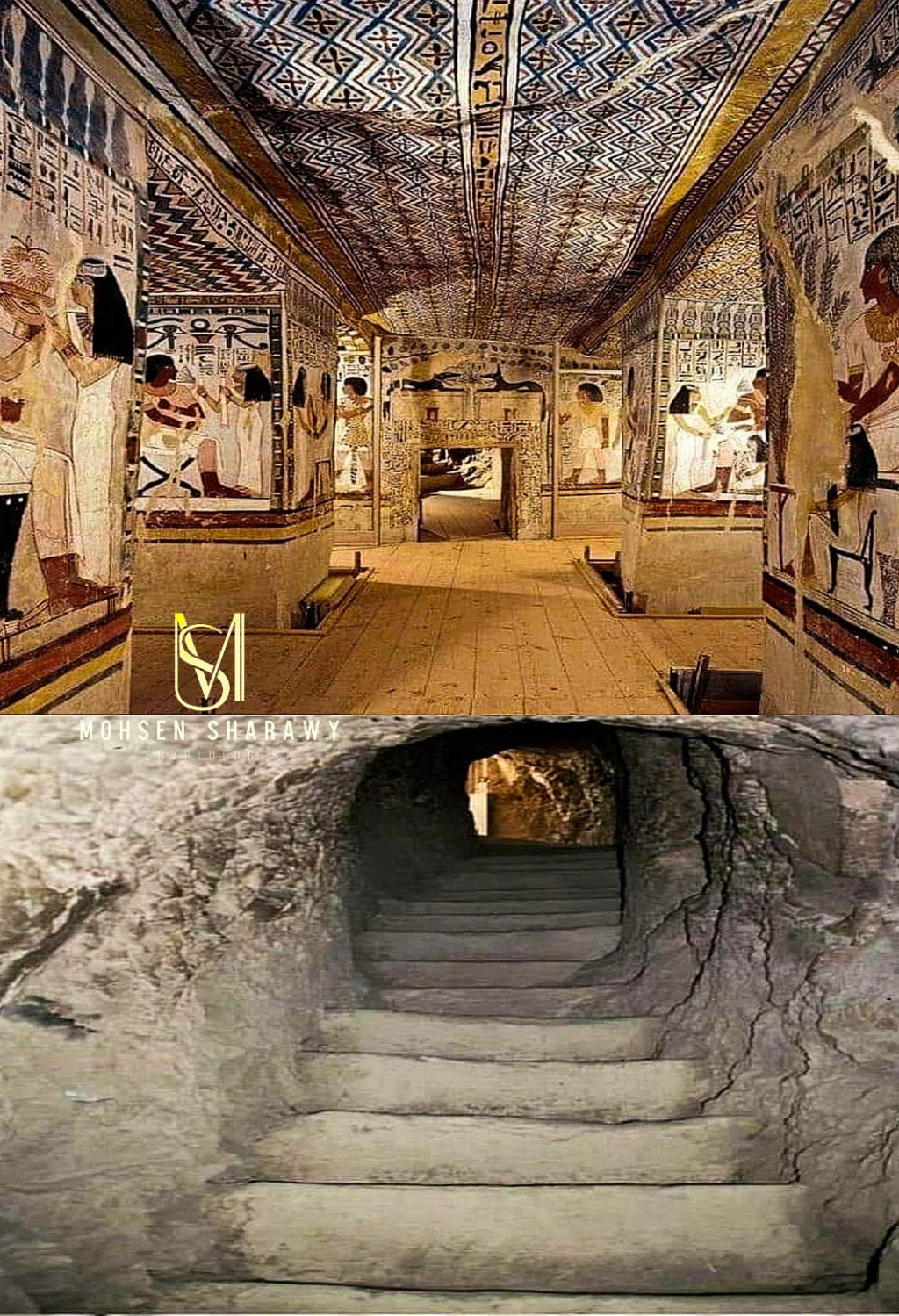The beauty of Sanfar cemetery

If you enter through this narrow entrance to the tomb of Snefer, the ruler of Thebes during the reign of King Amenhotep II, you will be amazed by the beauty that surrounds you on every side. This cemetery, which is located on the western side of Luxor, is one of the most wonderful cemeteries of nobles that this region abounds with. This tomb is distinguished by its colorful paintings that reflect Smurf's life and his high positions in the service of the king. He was a supervisor of the gardens of the Temple of Amun, a manager of the king’s wealth, and a holder of his seals. The drawings also show scenes from daily and religious life at that time. The burial chamber in this tomb is unique, as it is the only tomb of nobles that was completely decorated with colors. The Tomb of Snefer is an example of ancient Egyptian art and history, and is worth visiting and admiring.
The tomb of Sennefer (in English: Sennefer), bearing the number (TT96), and he is from Thebes. Snefer worked as a supervisor of the gardens of the Temple of Amun during the reign of King Amenhotep (Amenophis) II. During the reign of Tuthmosis III, he held the position of manager of the king’s wealth and bearer of the king’s seals. “Senfer” gave birth to a daughter named “Ranina.” The ceiling of the main room of his tomb is decorated with very clear formations of overlapping grape clusters. As for the surrounding walls and columns, most of the scenes painted on them depict “Smurf” with his sister. What remains of the remains of “Sanfer” are various statues of him and a prayer niche at Mount Silsila. It is believed that a state employee during the rule of Hatshepsut seized the chapel and put his name on it.

Snefer was the ruler of the southern city (Thebes) during the reign of King Amenhotep II. The tomb’s shrine begins with a narrow transverse hall, followed by a longitudinal hall closer to the corridor, from which we reach the chamber for offering sacrifices and performing rituals, which here has become the important part of this tomb’s shrine. The room is wide and becomes closer to the hypostyle hall, as it contains four rooms in two rows. There is also a small room on its northern side with a column in the middle. From here it is seen that the greatest importance is now focused on the offering room. This is the cemetery's shrine and has now been used as a warehouse because there are no significant scenes on its walls.
The tomb of Senfer is distinguished by the fact that the part engraved in the rock is decorated with colorful drawings that have cultural importance. The tomb of Senfer is the only cemetery among the nobles’ tombs other than the tombs of Deir el-Medina, where the burial chamber was decorated with colorful scenes. This cemetery is known in scientific books as the Grape Cemetery. The reason for this name is due to the scenes of the grape vines on its ceiling, especially since the roof of Snefer’s burial chamber was not leveled, but rather carved in an irregular manner, so that the grape vines appear as if they were naturally anthropomorphic, and the views of the grape vines continue to the bottom to form Frieza.
Source: websites

